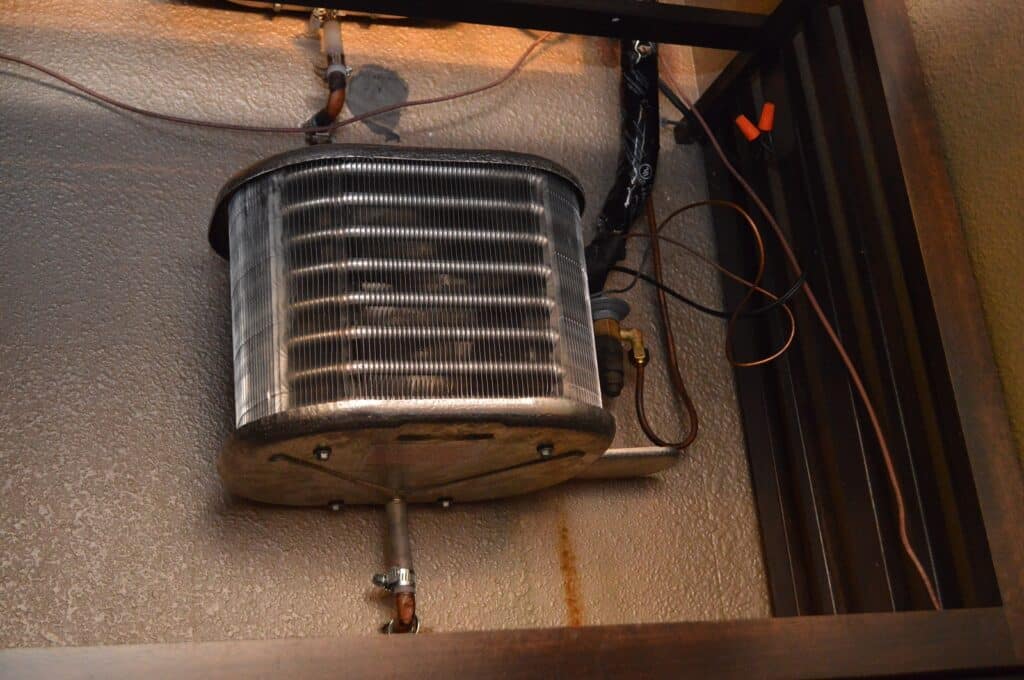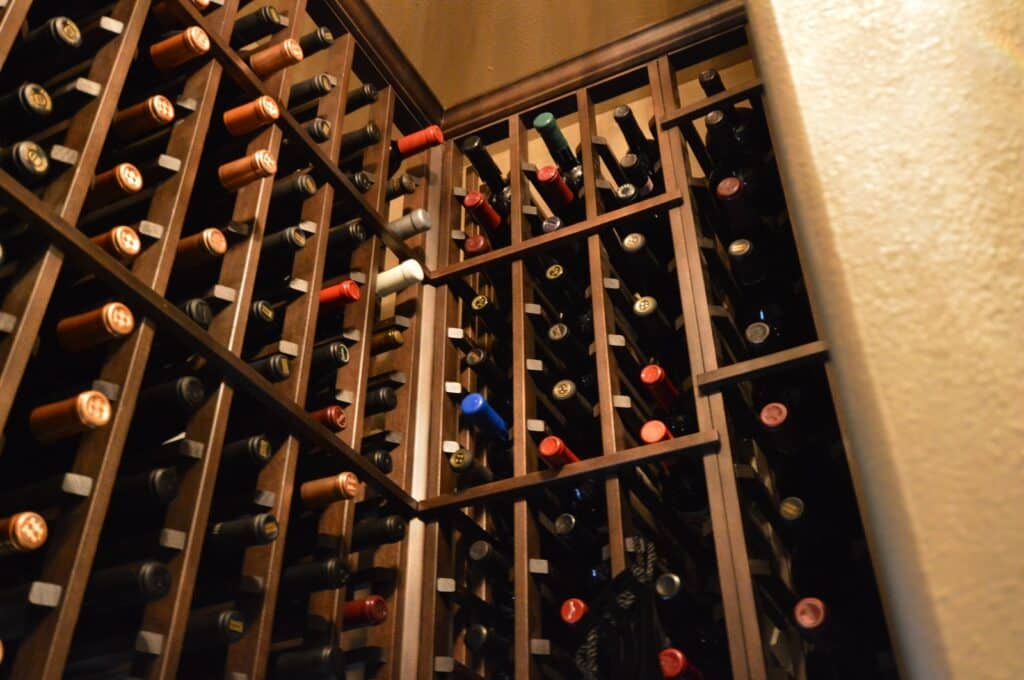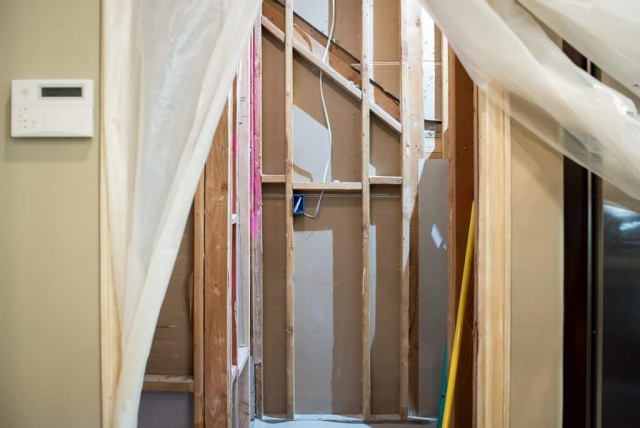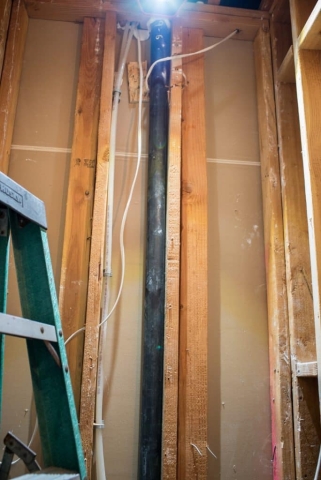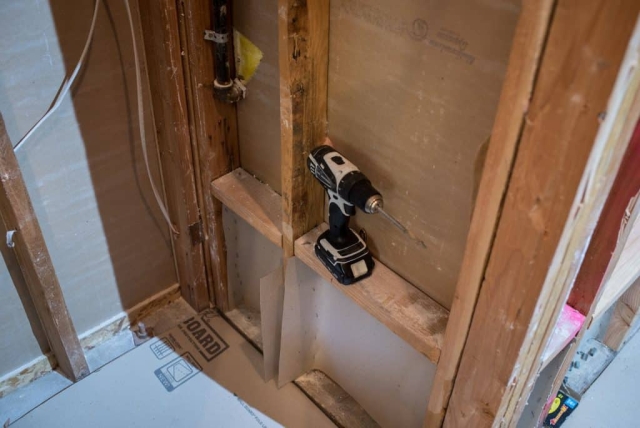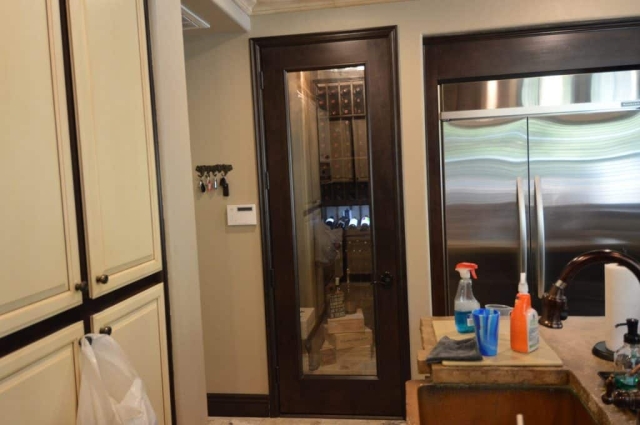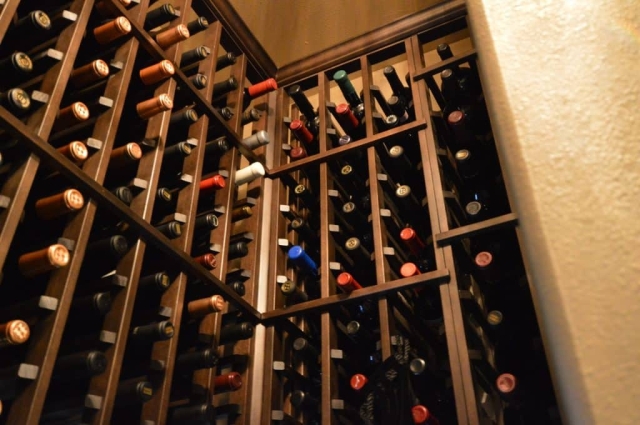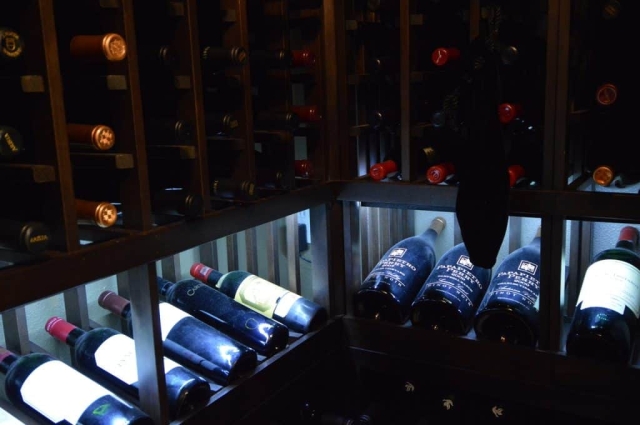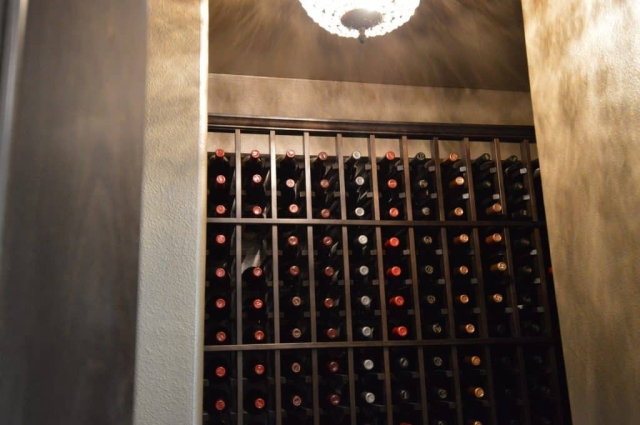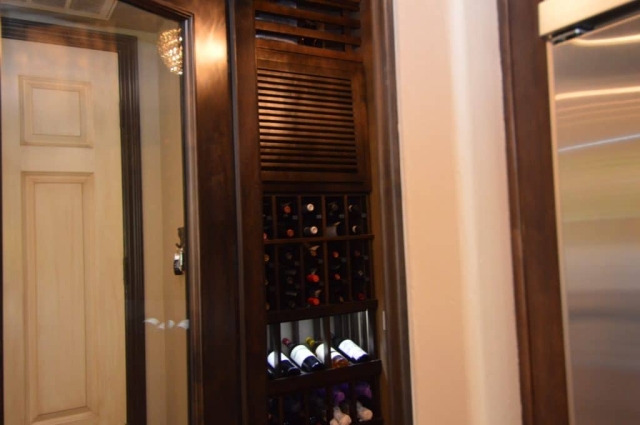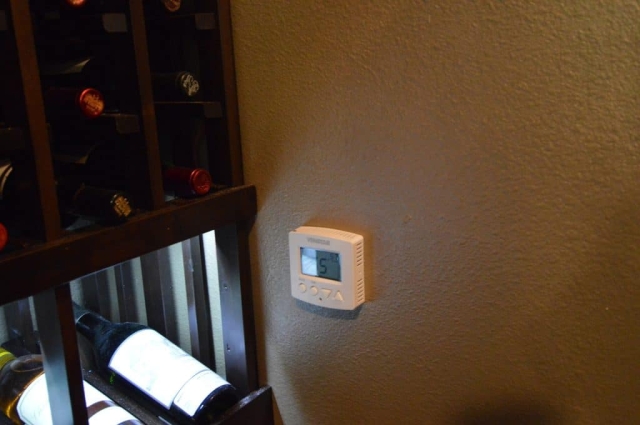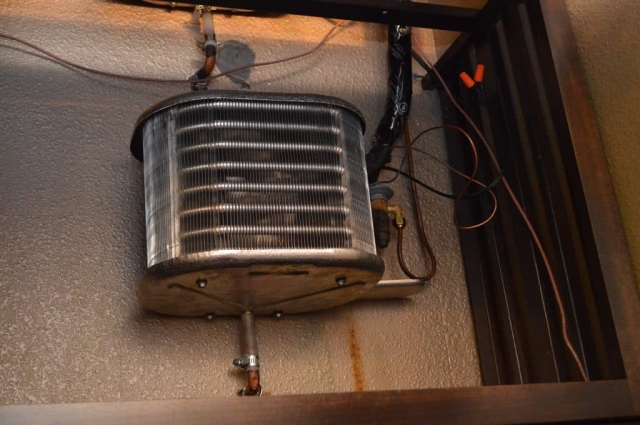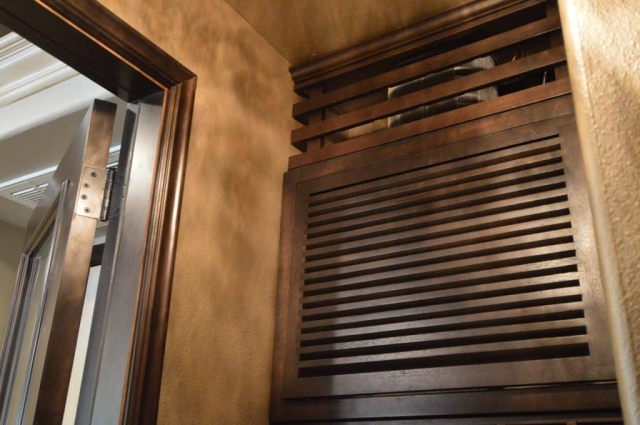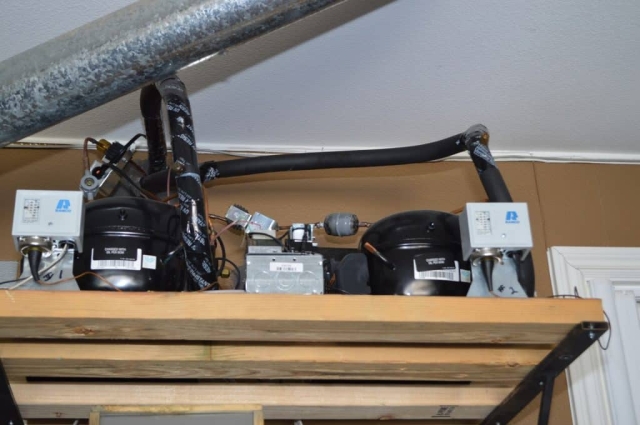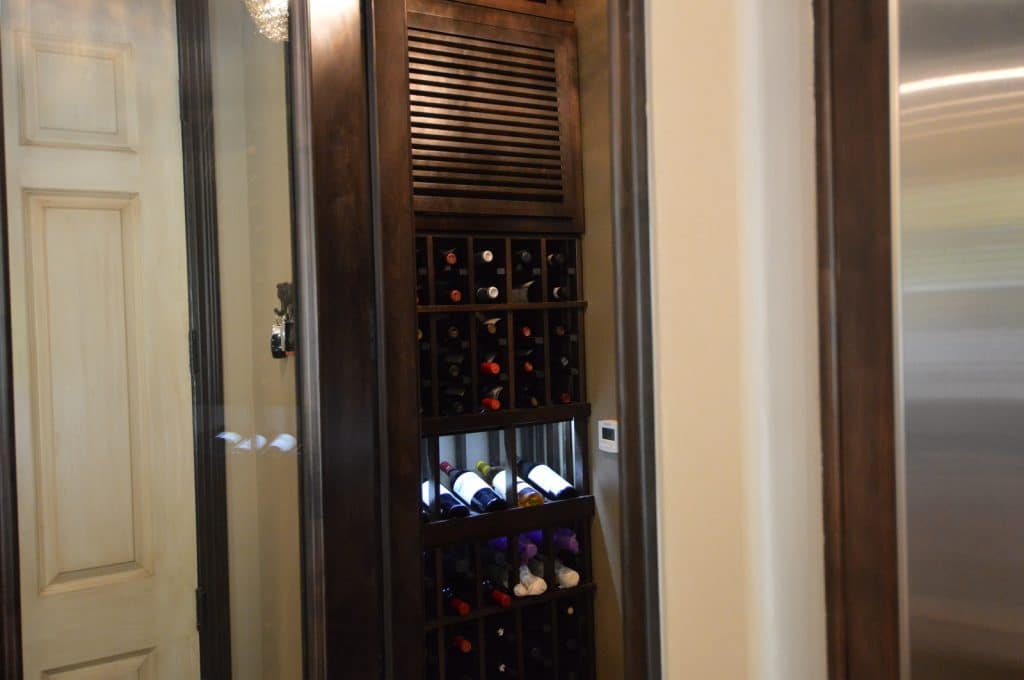
For this wine cellar, the Arctic Metalworks team created two wooden wine racks. From this angle, you can see one of them.
Have you ever wondered what goes into making a wine cellar? Due to the delicate nature of wines, the environment where they are stored is highly controlled to bring out their full flavor, consistency, and aroma.
In this article, we’ll walk you through the essential things Arctic Metalworks consider when designing and constructing a fully-preserving wine cellar inside a small, walk-in kitchen pantry.
Initial Assessment
Arctic Metalworks has designed, built, maintained, repaired, and renovated wine cellars for over a decade. We’ve streamlined our processes to produce wine cellars that 100% satisfy the client’s needs and wants and finish a project in the fastest time possible without lowering the quality of our workmanship. Once a client reaches out and requests us to make them a functional wine room or closet, we make sure to give them a reasonable price estimate based on the following information:
- Location of the cellar within the property
- Distance of the cellar from external walls
- Presence of another room above or below the cellar
- How much glass the client wants for the cellar
- What type of cooling system the client prefers
- Estimated area size for the wine cellar
- Available attic or wall space to run the electrical and cooling system lines
- The type of wines in the collection
- The area’s seasonal climate (location of the property)
- The kind of wine racking the client prefers
- Lighting systems the client fancies
- Budget
This information is also crucial for us to:
- Determine the length and path of the cooling lines when the client opts for a split-system or ducted wine air conditioning unit.
- Determine how much horsepower is needed to efficiently cool the entire room.
- See how feasible the clients’ design preferences are and find the right solutions that could best deliver them.
Once the client approves our cost estimate, we deploy our team to the site for verification and actual measurements.
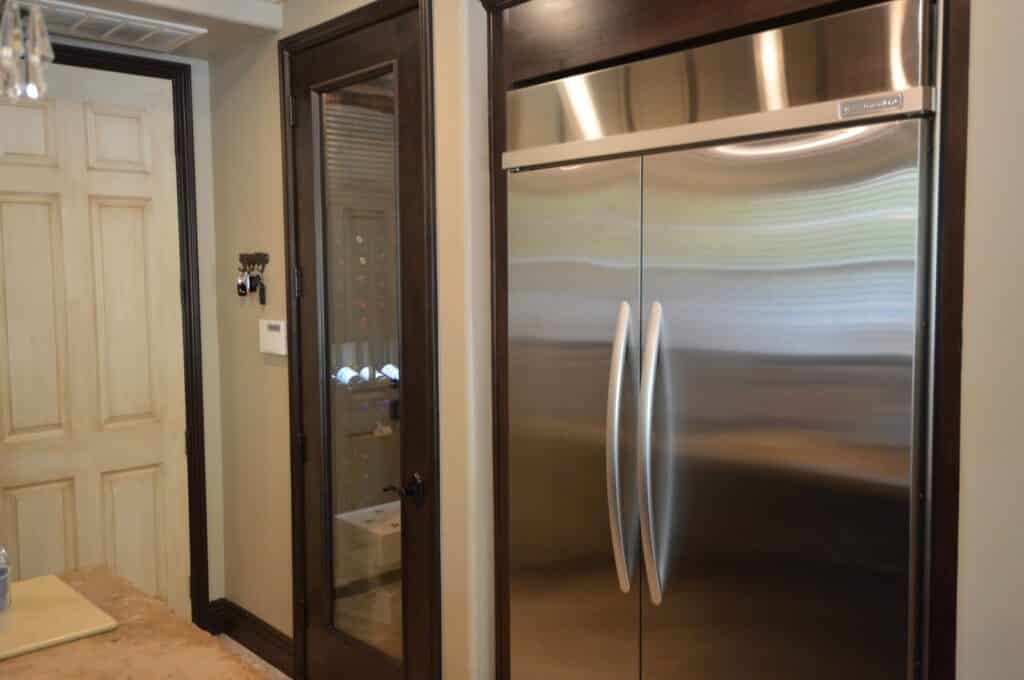
The kitchen pantry that Arctic Metalworks turned into a wine cellar is right beside the refrigerator.
Making a Wine Cellar Design
Contrary to the notion that wines are supposed to be entirely deprived of oxygen as brought about by the airtight features of a cellar, wines need oxygen to “breathe” and age well. That’s why corks are used — their porosity allows minute quantities of air to mix with the wine, oxidizing it to form the desired flavor. For wine bottles with screw and crown caps, look closely, and you’ll also notice some small perforations on the caps or tin foil. Again, this is to allow oxygen to enter. Wines stored in anaerobic conditions (no oxygen) can develop unsavory tastes and aromas like that of rotten eggs, so it’s essential to keep the cellar’s airflow constant and evenly distributed.
The facts above are just one of the many things that a good wine cellar designer needs to understand. The placement of the cooling system, lighting, racks, and materials to be used will also depend on what type of wines the client has and the kind of wine the client plans to collect in the future. You can expect that excellent wine designers and builders collaborate with the clients (wine connoisseurs, sommeliers, and collectors) to know their wines better.
Insulation and Vapor Barrier
An excellent home wine cellar starts with sufficient insulation and moisture-resistant walling. Moisture-repellant wall components are necessary because vapor and moisture droplets can diffuse through the wall and into the cellar, creating an optimal environment for mold to thrive — something we never want for our wine collection.
Since wine cellars are always colder inside than outside, vapor and water droplets attract to their surfaces much quicker. Closed spray foam insulation is highly recommended to prevent condensation within the cellar. Although spray foam is about 2/3 more expensive than a plastic barrier, it’s more effective. Not only can we control its R-value, but spray foam also has great vapor barrier properties. You wouldn’t need to buy a separate vapor barrier to shield the inner wall!
Likewise, spray foam is very convenient. It can easily fit into small holes and cracks, air gaps that rigid insulation materials can’t cover. Apart from the insulation, we also adjust the thickness of the studs when necessary. Thicker studs are often required when the cellar is attached to an exterior wall, or the cellar is exposed to direct sunlight for long periods of time.
Once the foam has settled and the cooling lines are in place, drywall is put up to close the entire wall. Because spray foam can already block vapor, using regular drywall is enough. Otherwise, we’d need to use moisture-resistant drywall when making a wine cellar.
Wine Cellar Cooling System
The 2nd most crucial component in a wine cellar is the cooling system. Air conditioners contain freon, which absorbs heat inside the cellar through an evaporator and transports this heat to the condenser. This cycle continues until the room reaches the desired temperature as monitored by the cooling unit’s thermostat. When the desired temperature is achieved, the machine pauses only to operate again when the temperature exceeds the limit set by the builder.
Choosing the Right Cooling Unit
When choosing a cooling unit, there are two main things to consider: the type of cooling system and the horsepower. Usually, the bigger the room, the bigger the horsepower needed. For this pantry, we only used a unit with a quarter horsepower. Nonetheless, to make a more well-informed decision about the cooling unit, we always conduct a heat load calculation wherein we measure different aspects of the room and input the data onto a software that then calculates the B.T.U. Rating. The B.T.U. is the amount of heat inside the cellar, which tells us how much horsepower can efficiently bring down the room’s temperature.
B.T.U.s are primarily influenced by the type of materials making up your wine cellar and their sizes. For example, if you want to enclose your cellar in glass, you can expect a higher B.T.U. Rating, thus requiring a more significant horsepower and calling for your cooling system to run more.
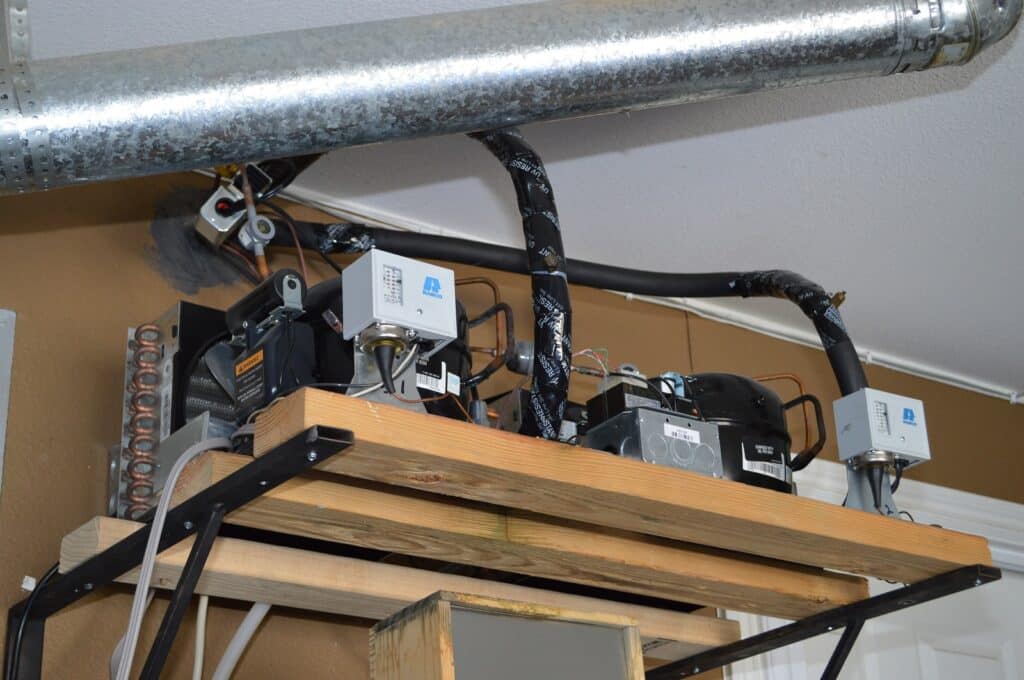
Part of making a wine cellar involves deciding on the right refrigeration system. This here is the air handler for the split-type cooling system installed outside the cellar.
Cooling System Maintenance Should Be as Thorough as Making a Wine Cellar
Checking up on your wine cellar cooling unit and periodically cleaning it is necessary because of the following reasons:
- Air conditioning systems burn out when they accumulate too much dust and dirt.
- The conditions inside a wine cellar are pretty corrosive to evaporator coils. Phosphate content in wines can dissipate onto the copper tubing, eating up the pipes, which often leads to leaking. If the coils aren’t rid of these destructive coatings, you must replace them.
When any of these happen, you’ll notice that your wine cellar will start to warm up and moist.
Maintaining a wine cellar cooling system usually takes an hour. One hour is already enough for cleaning the parts thoroughly, inspecting for leaks, checking the pressures, rerunning the system, observing all moving parts, etc. The frequency of maintenance also depends on your location; the more dusty your area, the more frequent your maintenance works should be.
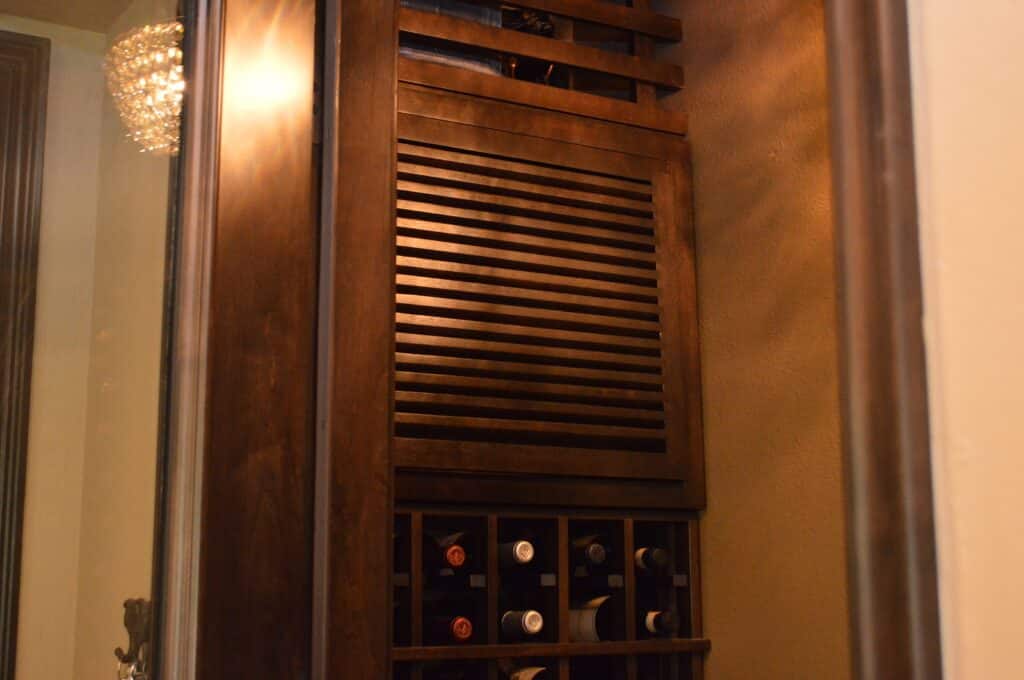
Constructing a wine cellar also includes hiding unsightly components. The louvered grille you see here hides the evaporator unit of the air conditioning system.
Arctic Metalworks offers a full-service wine cellar maintenance package to everyone, including clients who have requested us to build their cellars and clients who only need us for maintenance.
We also recommend having a backup cooling system in some cases. As much as our cooling systems are of premium quality, all mechanical systems always have limitations. A backup wine cooling system will automatically operate once the primary system malfunctions like in this pantry wine cellar. You read that right; you can fit two cooling systems in a small-sized wine cellar!
Wine Cellar Lighting
Since wine cellars have become sought-after design features in homes and business establishments, there has been continuous interest in creating ultra-dramatic designs that could mesmerize people even more. One of the ways to set the ambiance is the installation of warm-toned L.E.D. lights in various places around the cellar. We only use Light Emitting Diodes (L.E.D.s) because they don’t produce as much heat as other lights.
L.E.D. lights can be built into chandeliers, ropes or ribbons, wine racks, and acrylic boards. We always recommend surface-mount lights instead of the can lights because they’re more airtight than the latter. With can lights, moisture from the walls or ceiling may drip into the cellar.
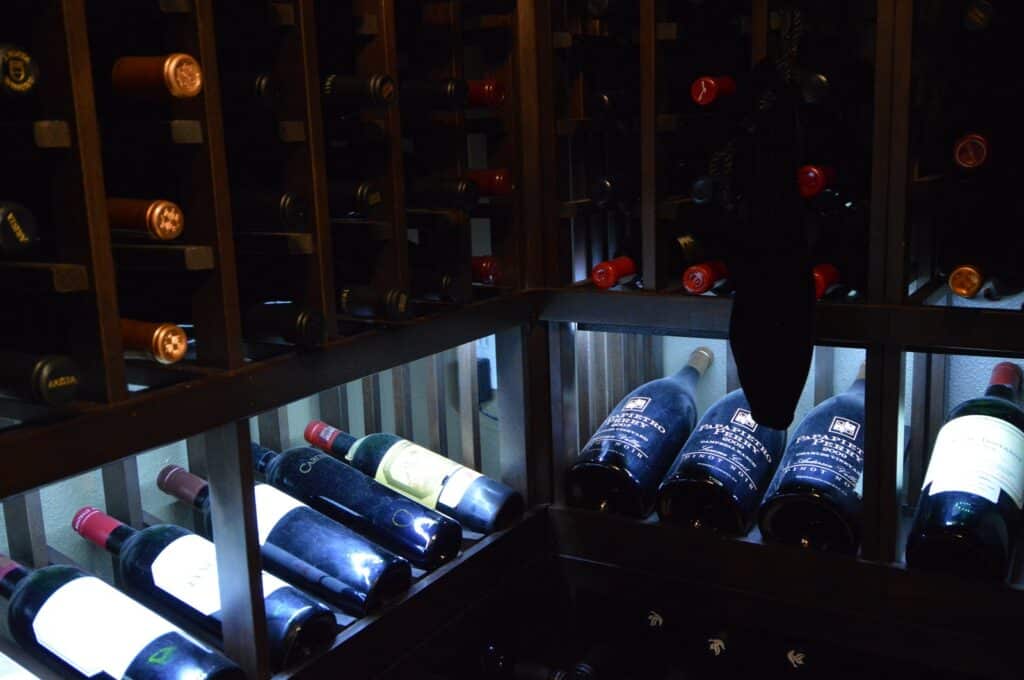
You don’t see the light bulbs along the high reveal because the team purposely hid them when they made the wine cellar.
Wine Cellar Doors
Wine cellar doors can be custom-built according to your preferred design. At Arctic Metalworks, we manufacture doors based on your desired look without putting aside the fundamentals of proper wine cellar door construction. Whether you like a wooden door, a glass door, or a combination of both, we ensure that it’s built to withstand the conditions inside and outside the cellar.
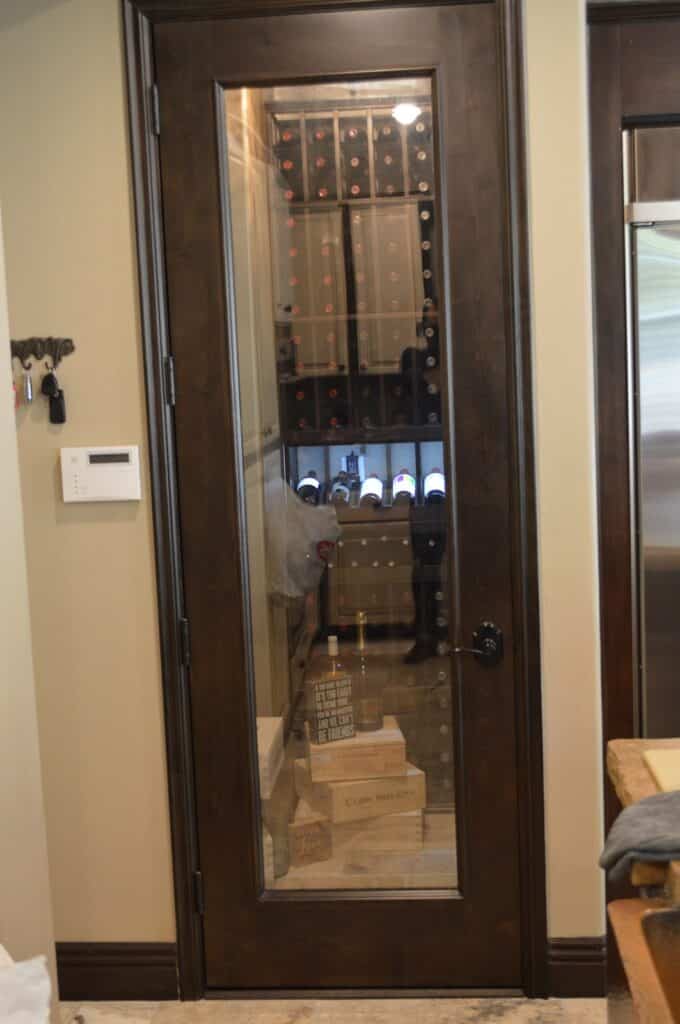
This is a simple wood-framed, glass wine cellar door. We also make fancily decorated wine cellar doors if that’s what the client prefers.
For wood, we use hardwoods and engineer them so they don’t warp easily. For glass, we use at least a ½” inch pane or a thicker one if the cellar’s location is hotter. As an added feature, we install automatic barriers at the bottom of the door where the coldest air molecules are concentrated. Barriers prevent cold air from leaking under the door.
Wine Cellar Racking
Once the room has been properly sealed, we add the wine racks, usually custom-built for the room’s dimensions. There are plenty of freestanding and modular wine racks in the market, but we always recommend customizing them, especially when the space is a bit limited, like in this kitchen pantry.
We installed a wooden wine rack made from mahogany for this project and finished it with a walnut stain. The walnut stain complemented the contemporary aesthetic of the kitchen, which was very important since you could see the cellar right through the glass door.
Wine cellar racks can also be made from metal pegs, rods, and cables which are longer lasting than wood. You can check our gallery for more wine racking inspirations or contact our team to design a unique racking system for your cellar!
Making a Wine Cellar with Arctic Metalworks is the Protection Your Precious Wine Collection Needs
California-based Arctic Metalworks is a mechanical contractor that creates and maintains climate-controlled wine cellars. They are a full-service wine cellar company that ensures every wine cellar project is done with precision from concept to finishing.
Making a wine cellar is our business and passion, and we’re always dedicated to designing and building our cellars properly the first time. If you need help with your wine closets, rooms, or cellars, or you’re planning to build a wine cellar on a budget, call us at +1 (714) 936 – 3905!
